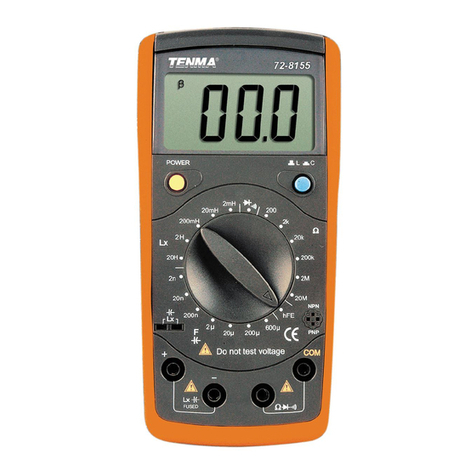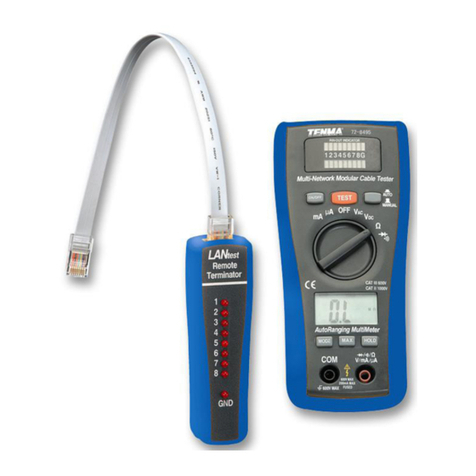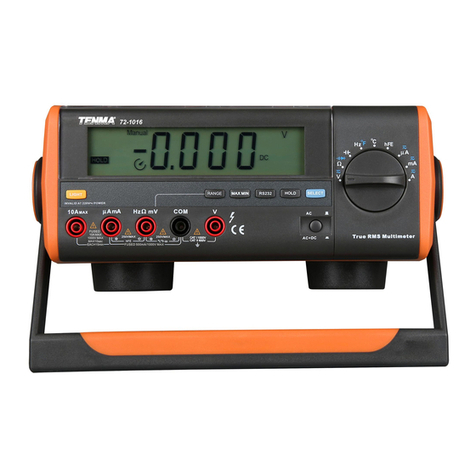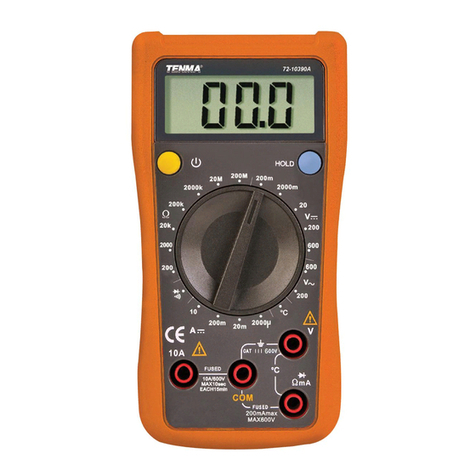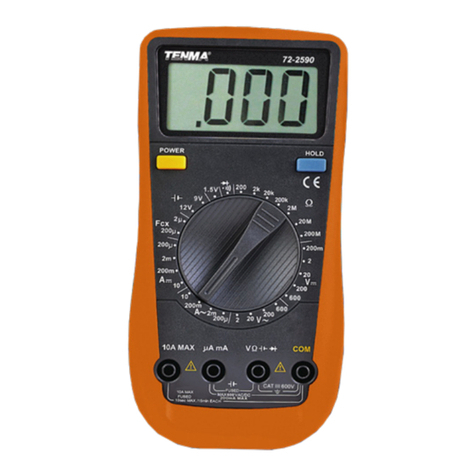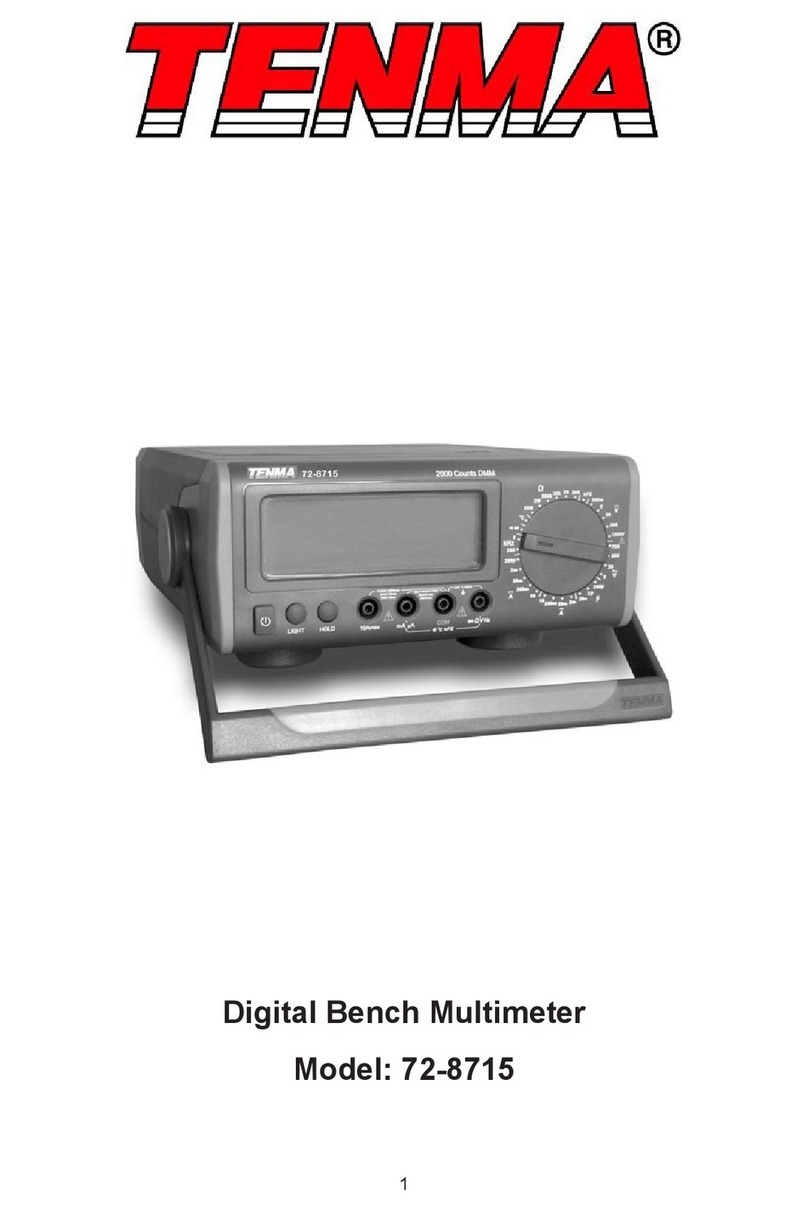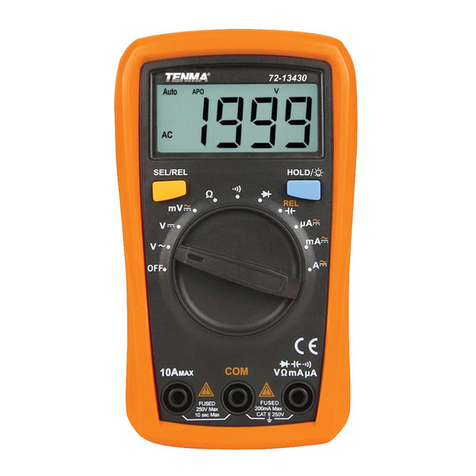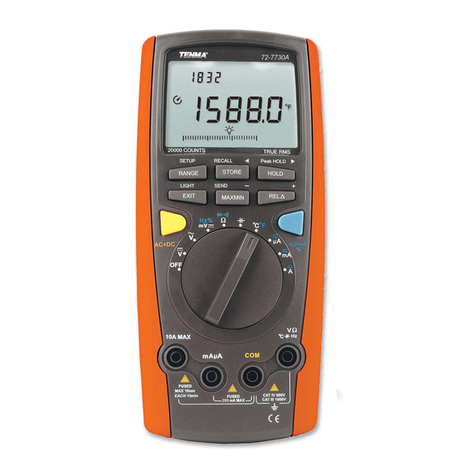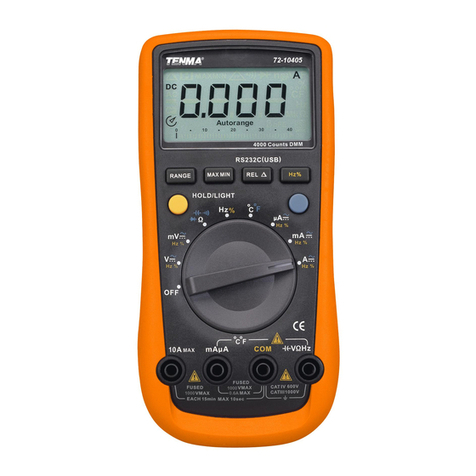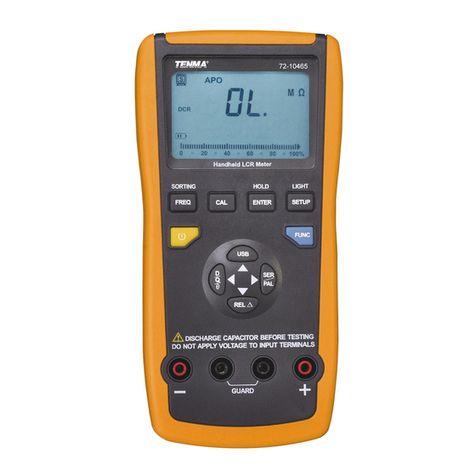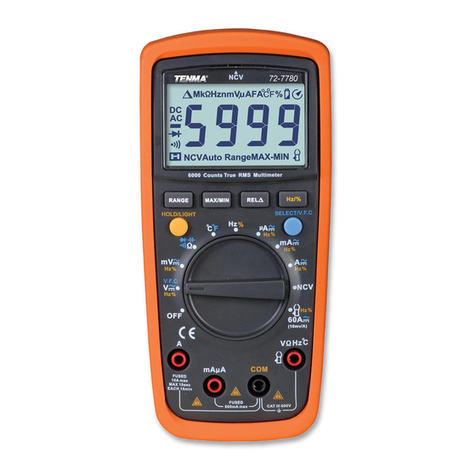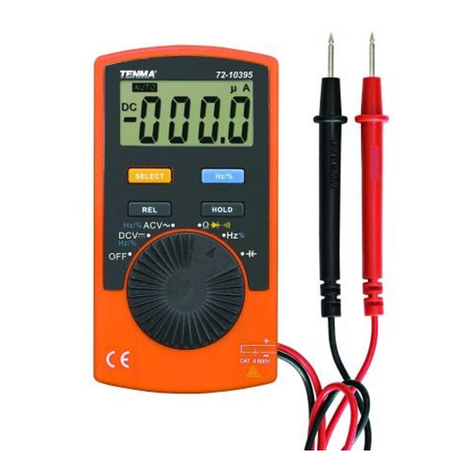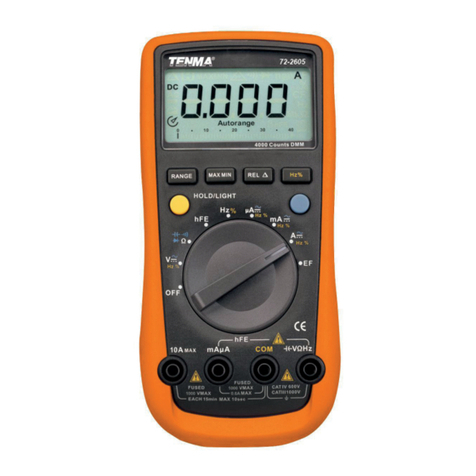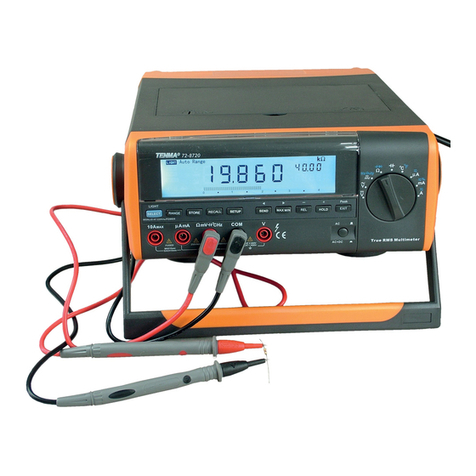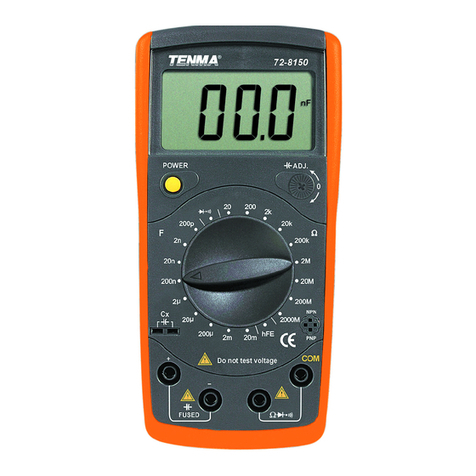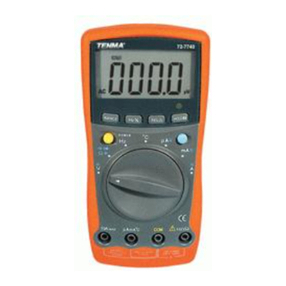
4
IMPORTANT SAFETY INFORMATION
• When using electrical appliances basic safety precautions should always be
followed.
• Never use a damaged meter. Before use, always check the meter case for cracks
or any missing parts.
• Inspect the test leads for any damaged insulation or exposed metal. If any test
lead is damaged, replace it before using the meter.
• Before using the meter, ensure the battery cover is closed and latched. Before
opening the battery cover, remove the test leads from the meter.
• Do not use the meter when removing the cover or opening the case.
• When the meter works at a voltage of 30V (rms) in AC, 42V (peak) in AC or over
60V in DC, special care should be taken as there is a danger of electric shock.
• Use the proper terminals, function and range for your measurement. Do not
operate the meter separately.
• When measuring the current, shut off the power to the circuit, then connect the
meter to the circuit. The meter and the circuit must be connected in series.
• When making electrical connections, connect the common test lead before
connecting the main test lead. When disconnecting, disconnect the main test lead
before disconnecting the common test lead. If the meter works improperly, do not
use it. The protection measures of the meter may have failed. If in doubt, send the
meter for repair.
• Do not store or use the meter in an environment of high temperature, humidity,
inammable, explosive and strong magnetic eld.
•When using the probes, keep your ngers behind the nger guards.
•Do not use the low-pass lter to verify hazardous voltage, for there may be a
voltage over the indicated value. Firstly, measure the voltage to check whether it is
hazardous in the case of not connecting a lter, then select low-pass ltering.
• Before testing resistance, continuity, conductance, diode or capacitor, shut off the
power to the circuit and discharge all high-voltage capacitors.
• Before measuring the current, check the fuses of the meter.
• Do not measure voltage or current higher than the allowed input values. When the
range of measured values cannot be determined, set the functional range switch
at the maximum-range position.
• When the low battery symbol is on the LCD, the battery should be charged as
soon as possible in order to ensure measurement accuracy.
• Do not arbitrarily change the wiring within the meter to avoid damaging the meter
and endangering safety.
•Test a known voltage before use to conrm the product is functioning correctly.
•If you need to replace the test lead, replace it with a test lead of the same or higher
grade of CAT III 1000V/CATIV 600V.
•When the meter detects voltage ≥30V or overload, the symbol “ ” will display as
a warning for a potential hazardous voltage.
Please read these instructions carefully before use and retain for future
reference.
